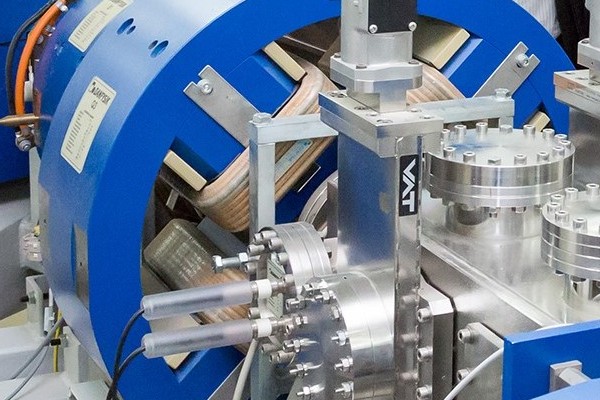The MASHA setup has been designed as a mass-separator with the resolving power of about 1700, which allows mass identification of superheavy nuclides. The setup uses the solid ISOL (Isotope Separation On-Line) method. The work on the project means the analysis of real data collected from the experiments of full-fusion reactions neutron evaporation residues and multinucleon transfer reaction 48Ca + 242Pu using the α-decay chains from the position sensitive Si detector. The use of the special hybrid pixel detector TIMEPIX with the MASHA setup for neutron-rich Rn isotopes identification also exists.
Tasks
- perform the analysis of α- and β-decaying nuclei near the N=126 shell closure at the focal plane detector of the mass-separator
- find peaks/tracks
- identify mass/decay schemes
Preliminary schedule by topics/tasks
1. Introduction lecture
2. Main parts overview + literature observation
3. Experimental data gathering
4. Data analysis using OriginPro software and the chart of nuclides
5. Discussion of the results with the supervisor
6. Preparation of the final report.
Required skills
English knowledge at least at B1 level;
knowledge in acceleration technology;
principles of nuclear reaction physics;
principles of semiconductor detectors work;
parts used at MASHA installation;
principles of mass-to-charge spectrometry;
knowledge of superheavy elements production at accelerators;
neutron evaporation residues reactions of complete fusion reactions;
fluent use a chart of nuclides;
OriginPro software to construct graphs and analyze it.
Acquired skills and experience
- advanced knowledge in acceleration technology
- Alpha-spectrometry analysis
- parts used at MASHA installation
- mass-to-charge spectrometry
- multinucleon transfer reactions.
Recommended literature
1. Chemical identification of Dubnium as a decay product of element 115 produced in the reaction 48Ca + 243Am. S.N. Dmitriev, Yu.Ts. Oganessyan, V.K. Utyonkov et al. Dubnium as a decay product.
2. Chemical characterization of element 112. R. Eichler, N. V. Aksenov, A. V. Belozerov et al. Nature. Letters. Vol. 447, May 2007.
3. The current status of MASHA setup. V. Yu. Vedeneev, A.M. Rodin, L.Krupa. Hyperfine Interactions 238:19 (2017).
4. MASHA Separator on the Heavy Ion Beam for Determining Masses and Nuclear Physical Properties of Isotopes of Heavy and Superheavy Elements. A.M. Rodin, A.V. Belozerov, D.V. Vanin. Instruments and Experimental Techniques, 2014, Vol. 57, No. 4, pp. 386–393. © Pleiades Publishing, Ltd., 2014.


